Upavistha Konasana
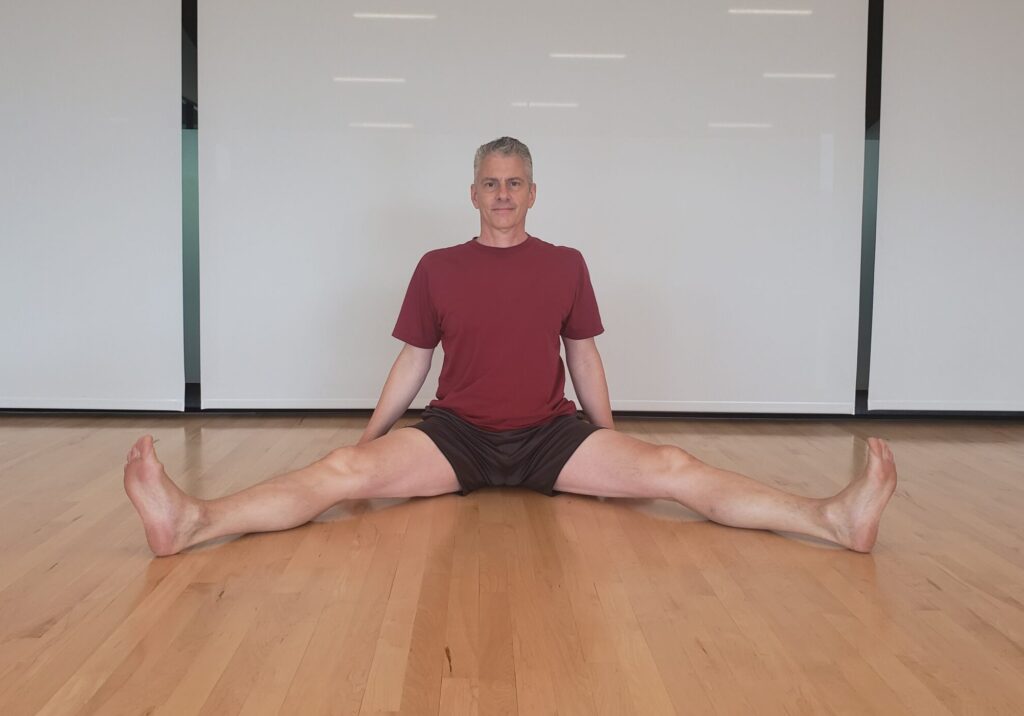
Wide-angle Seated Pose
Upavistha Konasana, like many forward bends, is a challenge for me. My hamstrings and hips are fairly tight, and that tightness limits forward bending. Upavistha Konasana is usually translated as “Wide-angle Seated Forward Bend”, but I find that it sets up a false expectation that I should be able to flop forward in this seated pose, bringing my chest close to the floor as depicted in many pictures of the pose. By altering the English translation to “Wide-angle Seated Pose”, I’m less likely to push myself into a forward bend that could strain my back or leave me feeling like I flunked the pose! Read on for instructions on how to approach Upavistha Konasana safely and with greater ease.
The Basics of Upavistha Konasana
Upavistha Konasana is a seated posed with the legs separated wide apart. You can practice the pose seated upright and focus on stretching your calves and hamstrings, opening your hips, and lengthening your spine. You can incorporate a forward bend IF you can maintain all of those elements AND hinge from the hips without folding from the mid-torso and rounding your back.
Don’t be afraid to use your props!
I always encourage my students to use as many props as they need to make a pose more accessible. It’s not cheating! And for a seated pose like Upavistha Konasana, you may need one or more blankets and a belt. You’ll see in the propped version of the pose that I’m using two thickly folded blankets to elevate my hips quite a bit. Let’s break it all down.
The Setup
Sit on the floor with your legs extended forward, then take your feet as wide apart as 90-degrees. If you can sit in this position without collapsing your spine, you might be able to work in Upavistha Konasana without the aid of one or more blankets under your pelvis. Even so, I recommend giving the hips a small lift by using one blanket anyway. Use as many blankets as you need to sit comfortably.
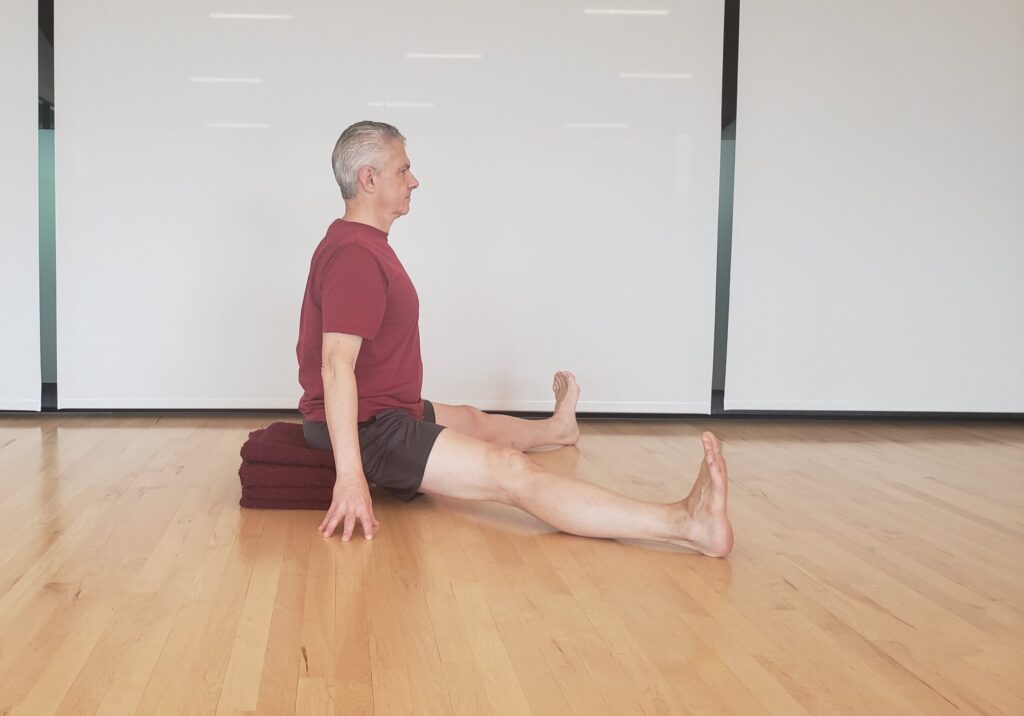
Engage Your Legs
In Upavistha Konasana, your hamstring and calf muscles lengthen. You’re essentially stretching from the sitting bones to the heels of your feet. Maintain that length and make sure that your feet remain flexed and your toes pointing up toward the ceiling. Avoid letting your legs externally rotate. If your feet angle outward from heel to toe, you’ve externally rotated and lost their vertical alignment.
Belt it
It takes a lot of effort and concentration to keep the legs engaged in this way, so you may want to use a belt to help maintain the position of the legs. Loop a belt around your feet as you widen the legs into a V-shape, holding onto one half of the belt in each hand. The belt can also assist in keeping the torso upright and the spine erect.
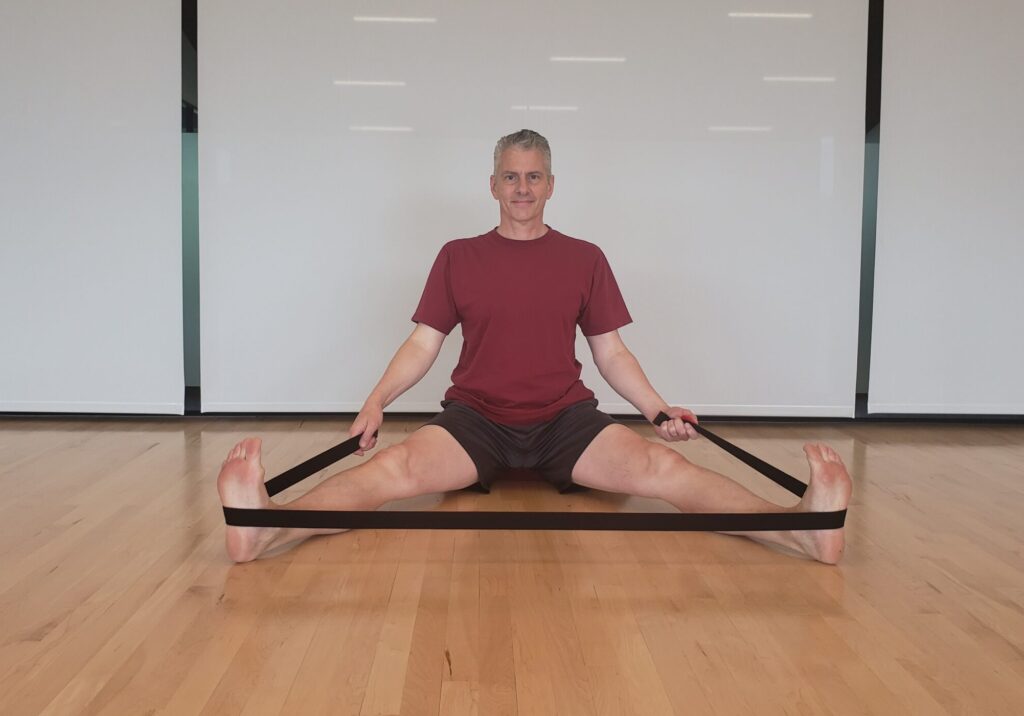
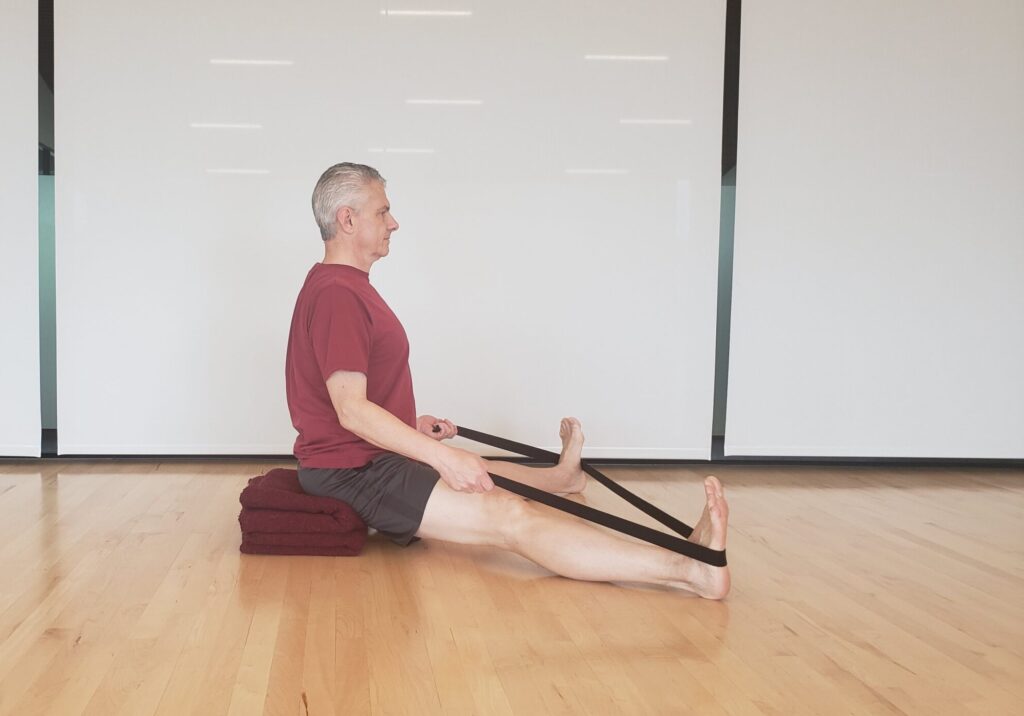
Stay in Upavistha Konasana for at least 30 seconds, or as long as you can comfortably maintain the pose.
The (Optional) Forward Bend in Upavistha Konasana
After sitting in this pose and maintaining an upright torso and erect spine, you can explore the forward bend, which I consider optional…and a bonus!
Forward bends begin in the pelvis, not the torso, so take a moment to become aware of your sitting bones. The sitting bones are the foundational points of all seated poses, and when you tilt the pelvis forward, imagine your sitting bones moving back in space away from your heels. As the pelvis tilts forward, the spine and the head follow. If you detect your back rounding fairly immediately, you may not be ready to incorporate the forward bend. No judgment! Be patient with yourself; it could take weeks or even months of diligent practice to experience even a modicum of forward bending. It took me years!
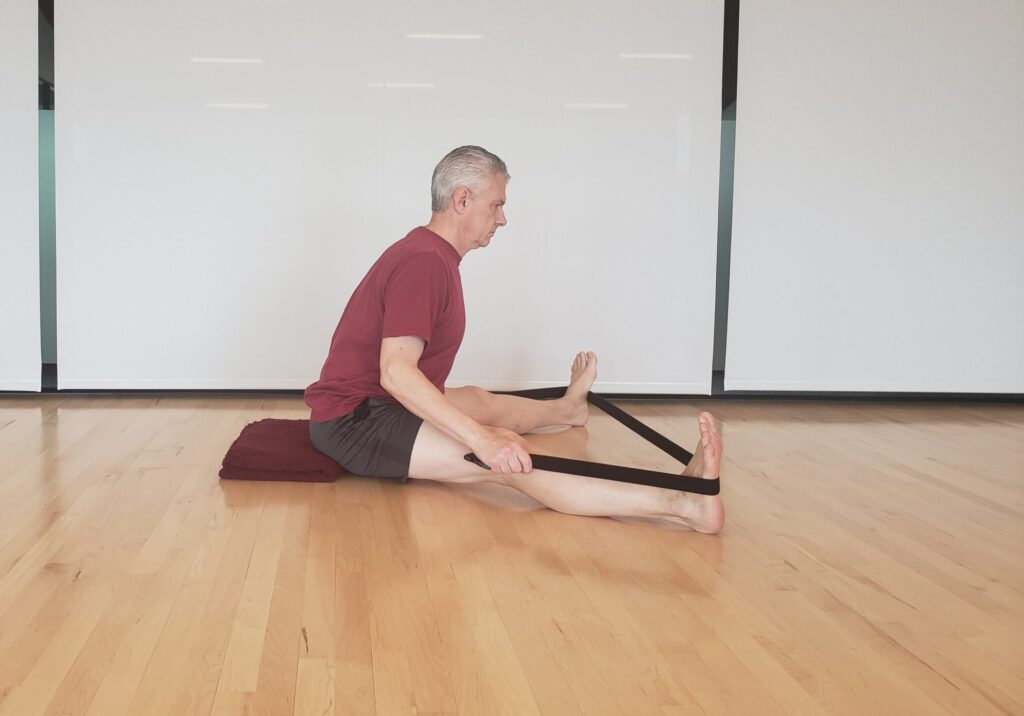
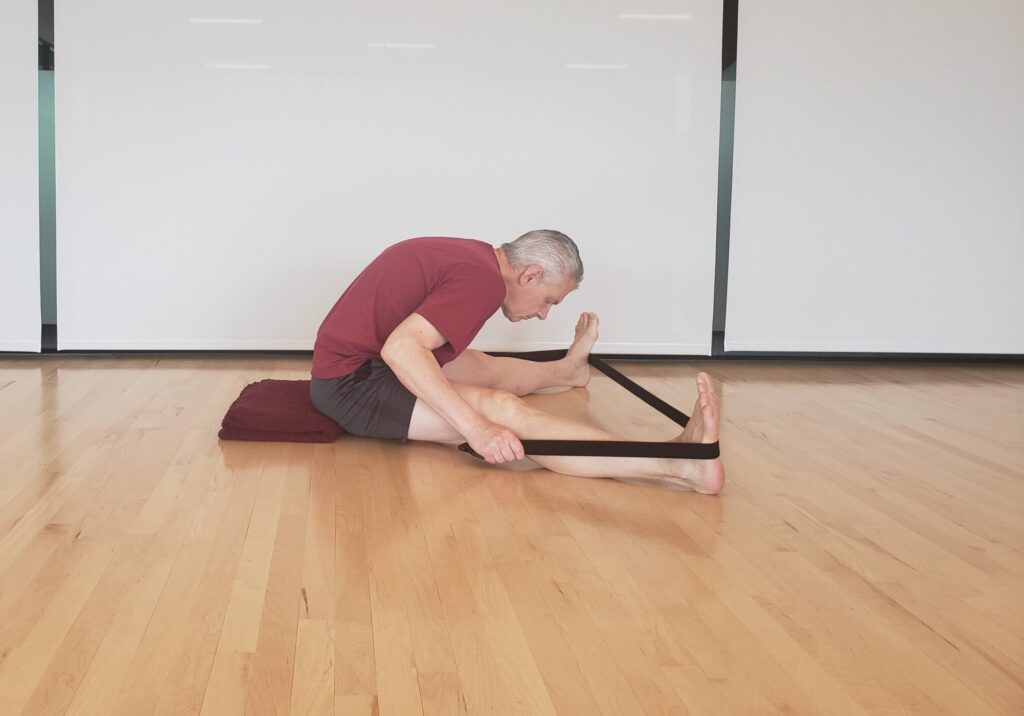
When the pelvis tilts, the spine moves in response to it much like a needle in a gauge. My mantra is, “Lead from the heart, and the head will follow.” It can help prevent the rounded spine. (And you can apply that mantra to life off the mat, as well!
If you’re using a belt, you can use it not only to keep the legs engaged and aligned, but also to maintain a long healthy spine and a broad, open chest as you maybe explore the forward bend.
Without Props?
Let’s say you can easily occupy Upavistha Konasana with the support of one or more blankets and a belt. Feel free to experiment with reducing or eliminating your blankets one at a time. I recommend keeping the belt as you do this and setting it aside at the very end.
Placement of Hands
If you’ve succeeded in eliminating your props, you might consider where to place your hands to continue providing a minimum of support for your upper body. Try placing your hands on the floor beside your hips. Or maybe slightly behind them. This can make a huge difference in the comfort of your upper body, especially the muscles of your back.

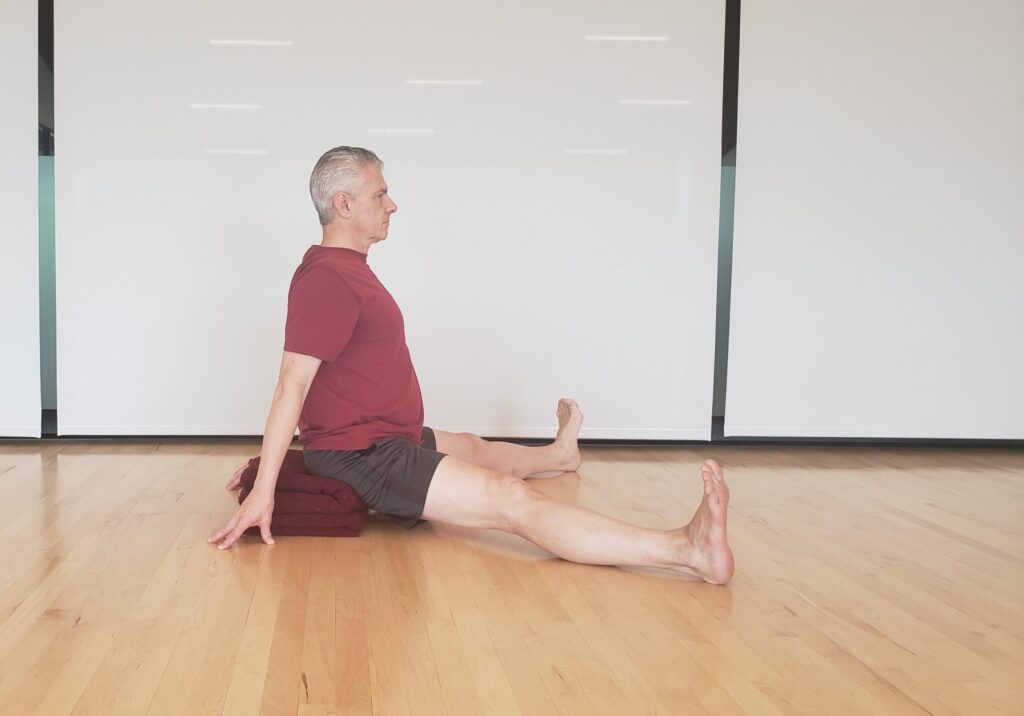
The Forward Bend
If you’re able to remain in the upright position for a minimum of 30 seconds and want to add the forward bend, place your hands in front of you between your thighs. As you tilt the pelvis forward, lead with heart and slowly, gradually walk your hands forward on the floor as you extend your spine and lower your chest toward the floor. Don’t be afraid to stop or to back away at the first sign of your back needing to round. Don’t force it!
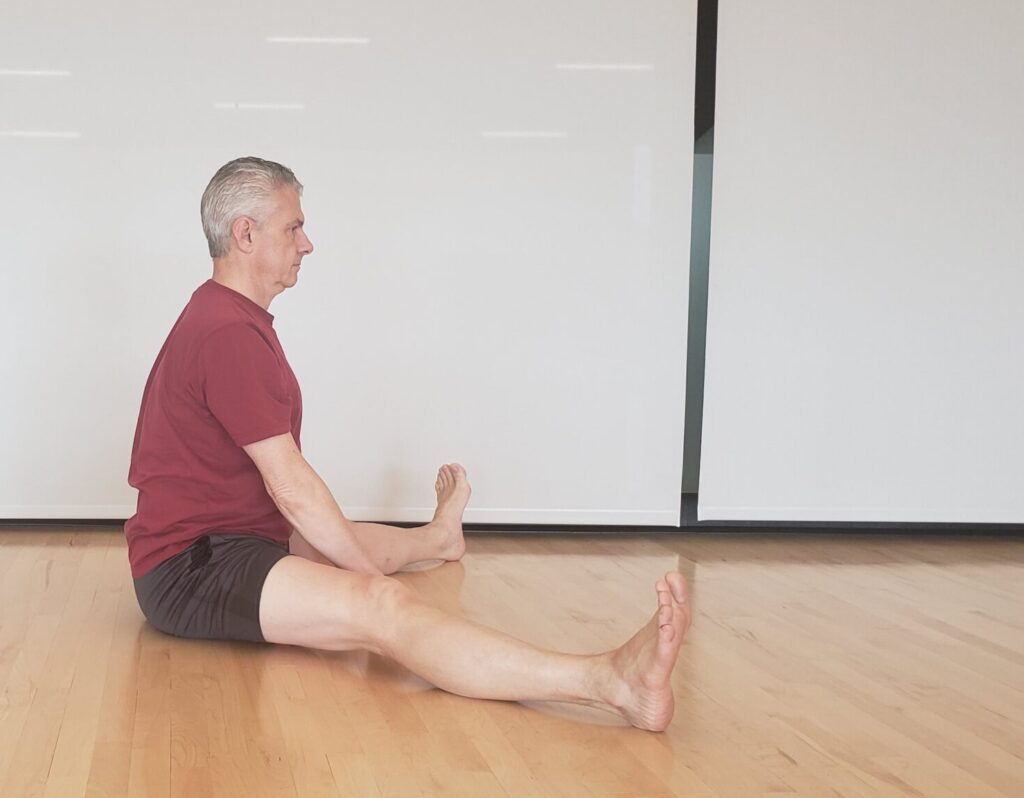


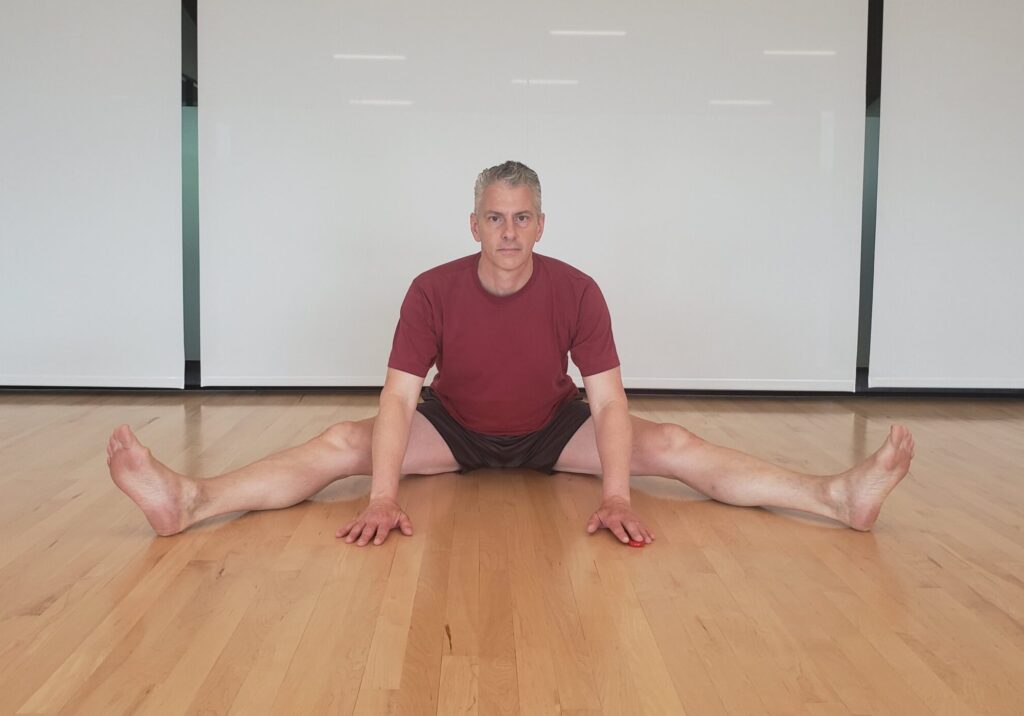
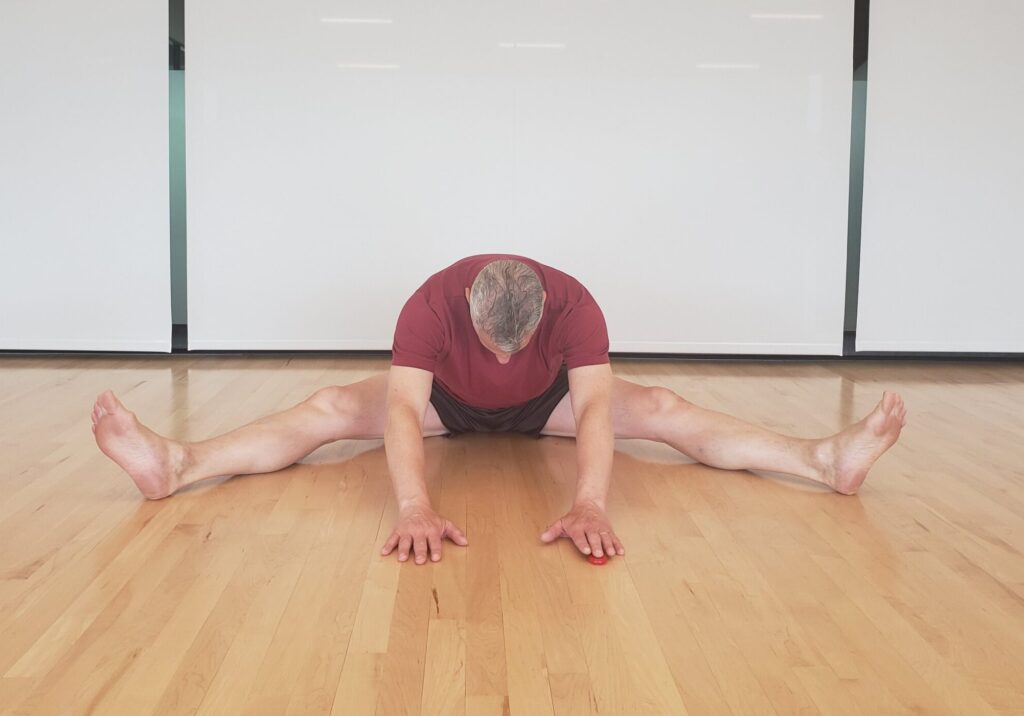
Final words
Focus on being where you are rather than where you think you should be. You’re less likely to injure yourself and more likely to enjoy your practice with less frustration and self-criticism. Good luck with Upavistha Konasana!
Lindel Hart teaches yoga online for PerfectFit Wellness. He lives in Western Massachusetts and teaches at Deerfield Academy, a private residential high school, as well as at Community Yoga and Wellness in Greenfield, MA. Visit his website, Hart Yoga.





Good info here! I have a lot of remote students who have limited props and do feel like they have “failed the posture”! If people don’t have blankets or blocks, they can roll up the end of their yoga mat and use that for some height.
And I’m not opposed to improvising with a couple of thick books to sit on. Volumes of old encyclopedias (remember those???) are great because of their larger format and varying thicknesses. You can easily customize how much lift you have for your hips.